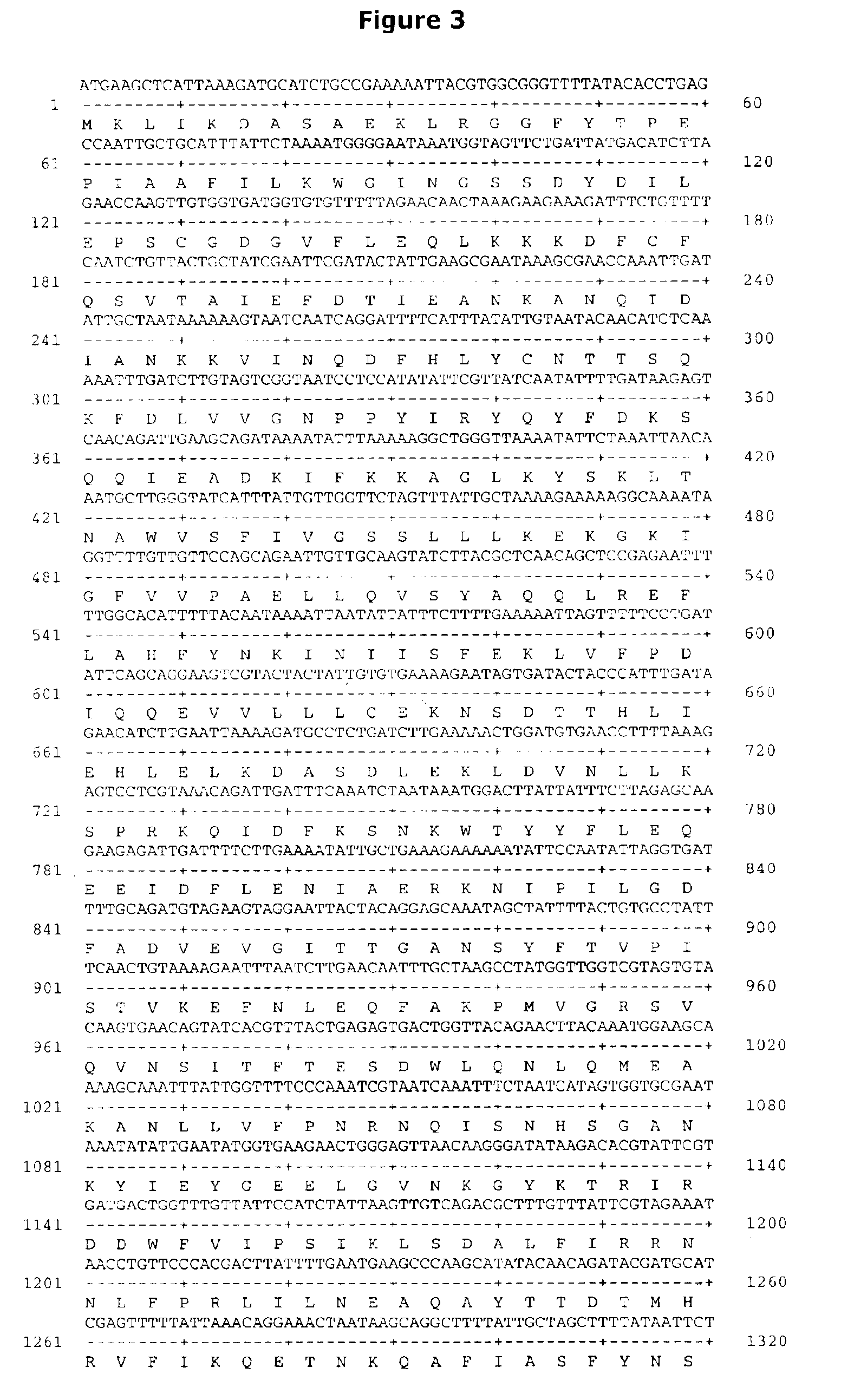Method for cloning and expression of AcuI restriction endonuclease and AcuI methylase in E. coli
a technology of restriction endonuclease and methylase, which is applied in the field of recombinant dna, can solve the problems of limited over-expression of such a large polypeptide, difficult construction of acui over-expression strain, and limited pcr amplification of 3.0 kb genes, so as to increase the probability of cloning a wild-type acuirm gene, the effect of low specific activity
- Summary
- Abstract
- Description
- Claims
- Application Information
AI Technical Summary
Benefits of technology
Problems solved by technology
Method used
Image
Examples
example i
Cloning of AcuI Restriction-Modification System in E. coli
1. Preparation of Genomic DNA
[0037]Genomic DNA is prepared from 7.8 g of Acinetobacter calcoaceticus SRW4 (NEB #1449, New England Biolabs strain collection) by the standard procedure consisting of the following steps:
[0038]a. Cell lysis by resuspending cells in 50 mM Tris-HCl (pH 8.0), 0.1 M EDTA and addition of lysozyme (2.8 mg / ml final conc.).
[0039]b. Further cell lysis by addition of SDS at a final concentration of 1.25%.
[0040]c. Further cell lysis by addition of Triton X-100 at a final concentration of 1.0%.
[0041]d. Addition of 25 ml TE (pH 8.0) and 40 ml distilled water to improve DNA yield during phenol-chloroform extraction.
[0042]e. After freezing overnight at −20° C., proteins are removed by phenol-chloroform extraction four times (equal volume) and chloroform extraction once (equal volume).
[0043]f. Dialysis in 4 liters of TE buffer, buffer change twice.
[0044]g. RNase A treatment to digest RNA (0.1 mg / ml final conc.)...
PUM
| Property | Measurement | Unit |
|---|---|---|
| pH | aaaaa | aaaaa |
| affinity | aaaaa | aaaaa |
| frequencies | aaaaa | aaaaa |
Abstract
Description
Claims
Application Information
 Login to View More
Login to View More - R&D
- Intellectual Property
- Life Sciences
- Materials
- Tech Scout
- Unparalleled Data Quality
- Higher Quality Content
- 60% Fewer Hallucinations
Browse by: Latest US Patents, China's latest patents, Technical Efficacy Thesaurus, Application Domain, Technology Topic, Popular Technical Reports.
© 2025 PatSnap. All rights reserved.Legal|Privacy policy|Modern Slavery Act Transparency Statement|Sitemap|About US| Contact US: help@patsnap.com



